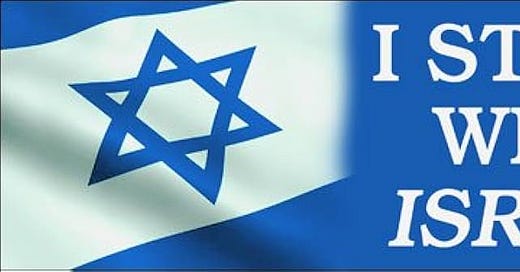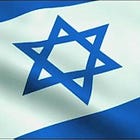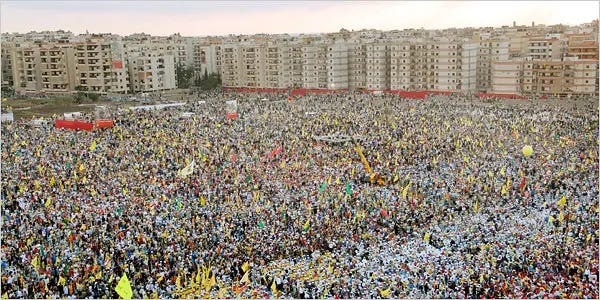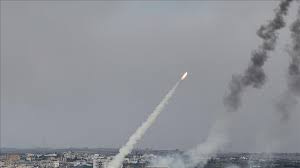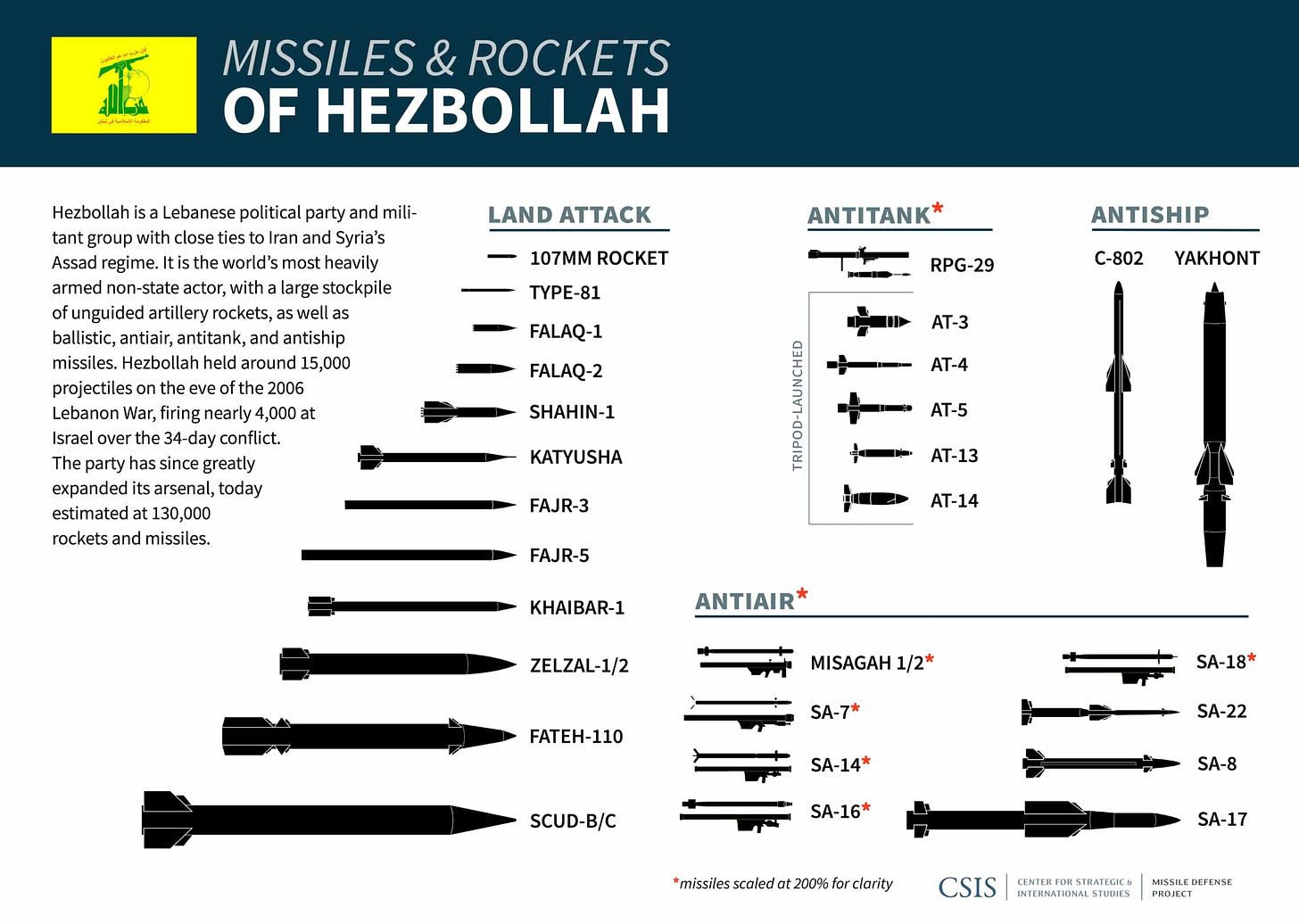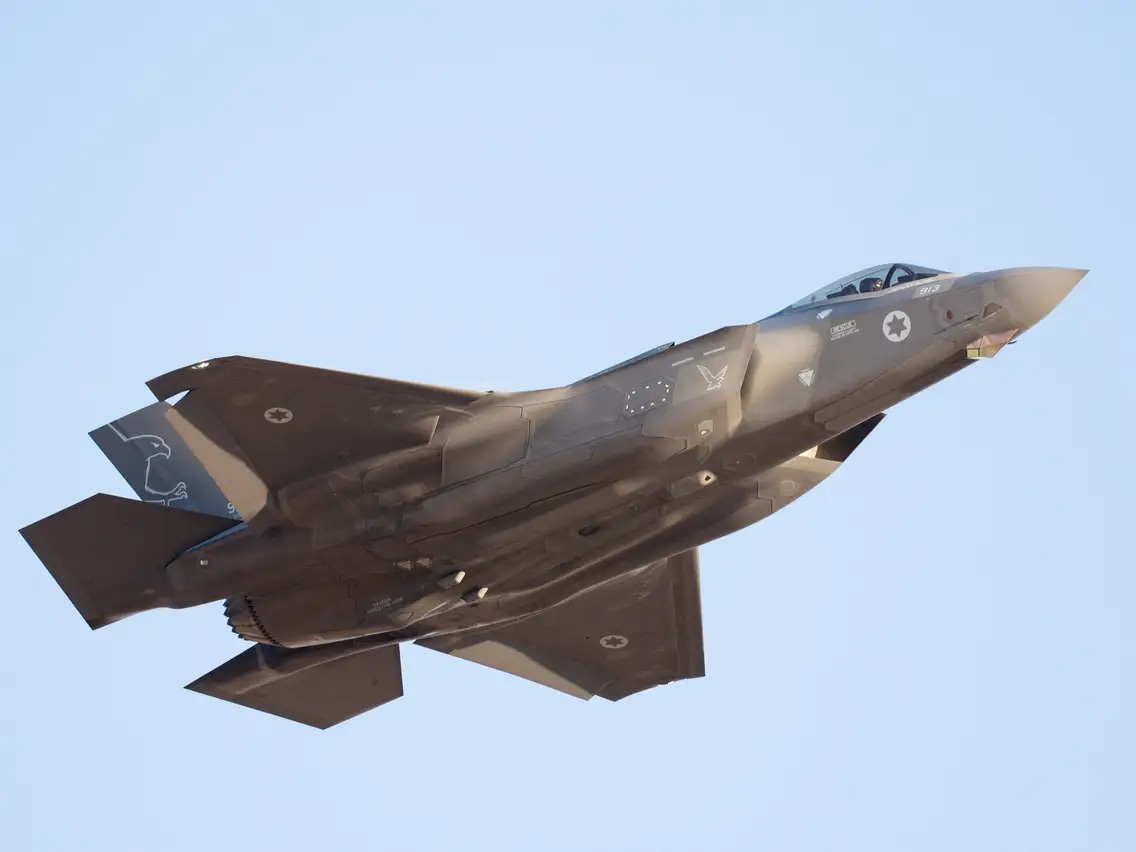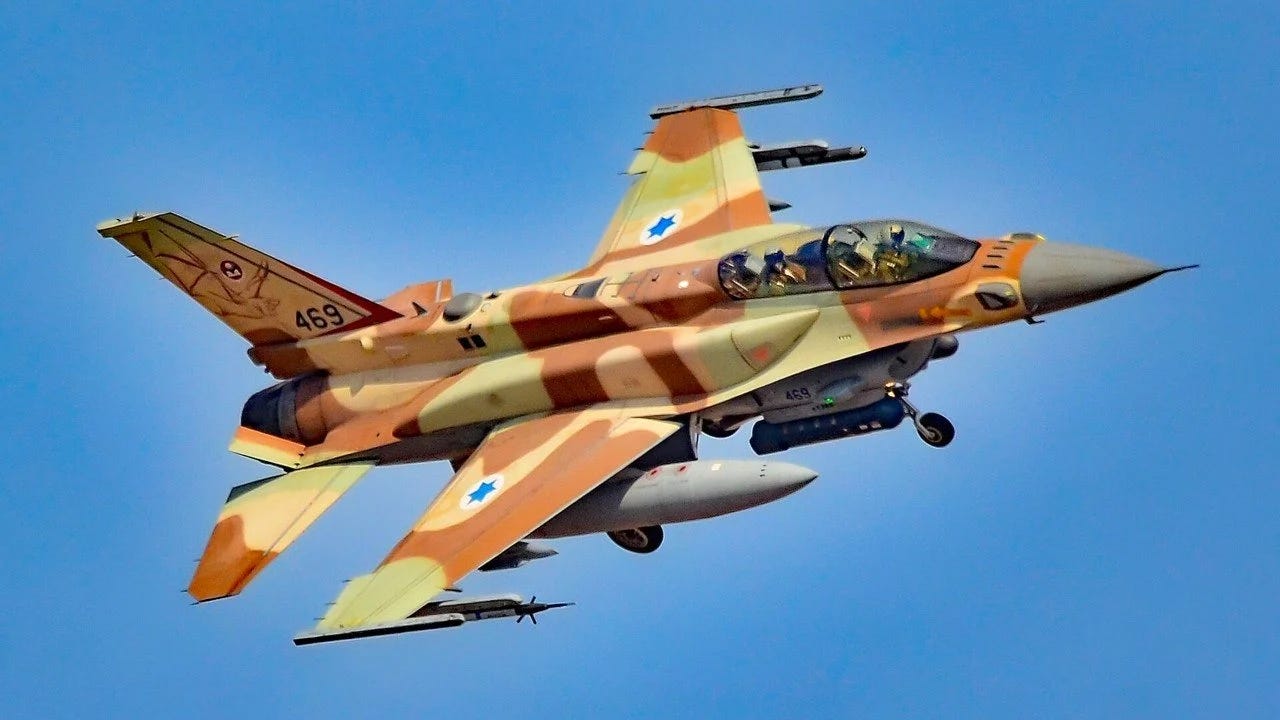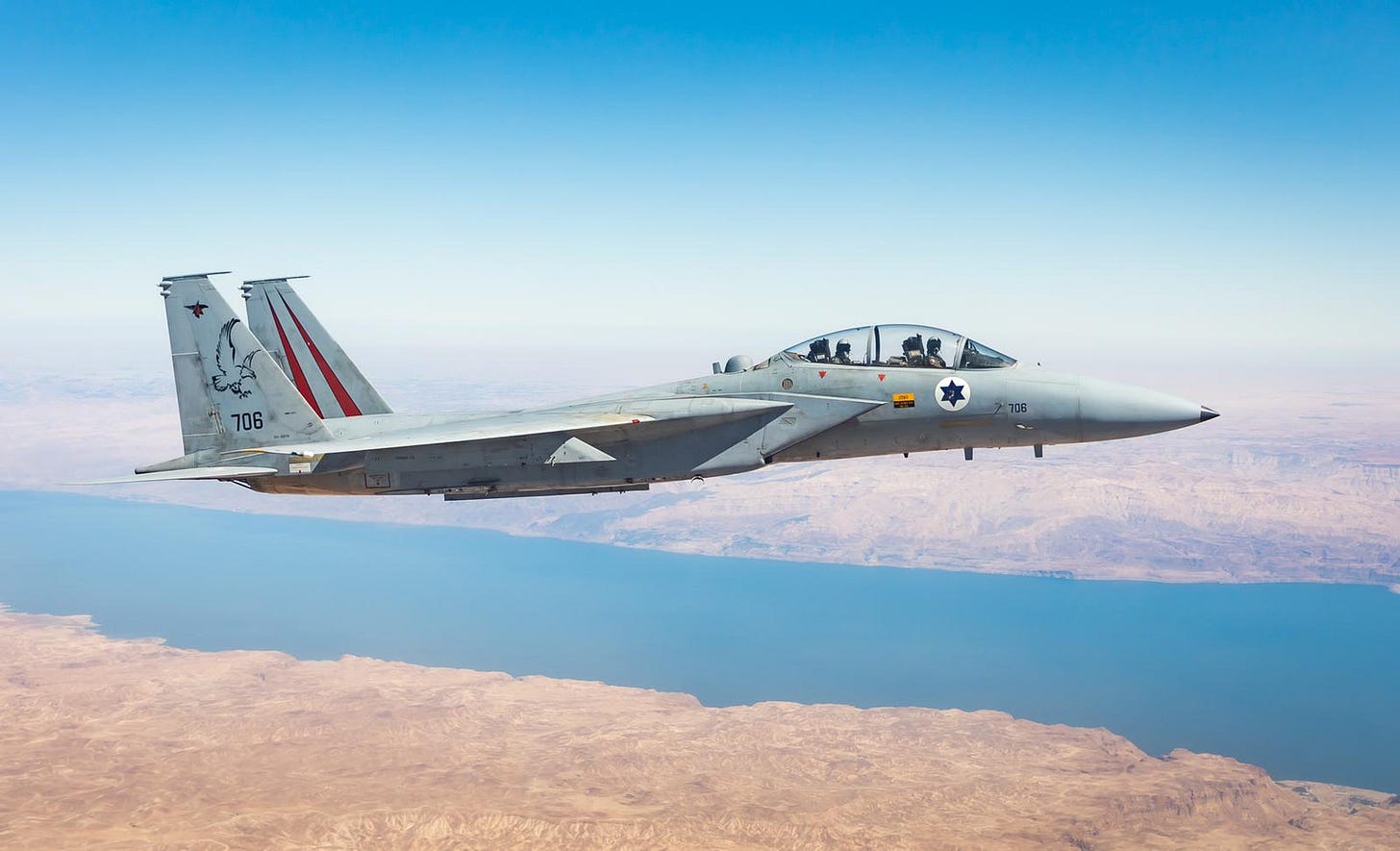Israel versus Hezbollah Part III
How Israel might conduct the war and what Iran might do in response
Breaking News!
As I’m editing this, it was just announced that Israel has managed to kill Hamas leader Ismail Haniyeh, with a bomb smuggled into a Tehran apartment building months ago. I’m not sure how this will affect the ongoing run-up to a Israeli-Hezbollah war or what response Iran might have. We will have to wait and see.
Israel versus Hezbollah Part III
Last week I examined Hezbollah's military capabilities, and what a war of between Israel and the terror group might look like. (Click the link below to read it). Taking recent events into account, it is becoming more and more apparent that war could break out at any moment. Today I will look at the options Israel has in that war, and what, if anything Iran might do if there is a large war between Israel and Hezbollah.
Israeli Objectives and Options
In light of the changing strategic landscape and Hezbollah’s evolving capabilities, what options does Israel have? There are at least four options: (1) return to the pre–October 7 status quo emphasizing deterrence, (2) an all-out war with Hezbollah to destroy the group’s capabilities and force it to comply with Israeli and international demands, (3) engage in a limited war with Hezbollah to put pressure on the group and push its forces further from the Israeli border, and (4) use coercive diplomacy to better implement UNSCR 1701.
Option 1: The Status Quo and a Return to Deterrence
Israel might try to return to a deterrent approach, which has uneasily kept the peace for almost 20 years. Deterring Hezbollah rests on the idea that the threat of massive Israeli retaliation, including the potential destruction of portions of Lebanon, will keep the group from launching large strikes on Israel. As Prime Minister Benjamin Netanyahu warned in December 2023, “If Hezbollah chooses to start an all-out war, then it will single-handedly turn Beirut and South Lebanon, not far from here, into Gaza and Khan Yunis.” The threat works by putting in jeopardy the lives of its leaders, its power in Lebanon, and the well-being of its constituents (although, how much actually cares about the citizens of Lebanon is debatable). After Israel left Lebanon in 2000, it retaliated against the occasional rocket strike or other violation of the peace with targeted strikes and the threat of more massive strikes should Hezbollah mount a larger attack.
Hezbollah says they care about its Lebanese constituents and recognizes that a repeat of the 2006 war, let alone something much worse, would be a disaster for these supporters. In recent years, Lebanon’s economy has plummeted, and Hezbollah does not want to take the blame for a war that would further devastate the country. Israeli threats have made clear to Hezbollah that Lebanon would be hit hard if an all-out conflict resumes, and the devastation of Gaza reinforces the credibility of this threat.
Deterrence, however, could fail for several reasons. A strike that kills large numbers of Israeli civilians, even if accidental, would inflame the situation. Deterrence also rests on understanding an adversary’s decision calculus, and Israel might misunderstand Hezbollah’s tolerance for attacks on Hamas leaders or the continued casualties among it’s fighters, especially important operational leaders. However, as previously noted, Israel’s risk tolerance has changed, and Israeli leaders might decide that even a small chance of Hezbollah attacking Israel needs to be preempted.
Deterrence seemed to be alive even as the events of October 7 were just ending, Hezbollah leader Hassan Nasrallah stressed in a public statement that while Hezbollah supports the Palestinian cause and their “brothers in Hamas”, Hezbollah does not plan to launch a broader war. However, a day later Hezbollah started launching missiles into Israel. Nasrallah says that they are showing restraint because Hezbollah strikes have focused on a discrete set of targets along the border, even though the group has the capacity to launch much larger attacks and hit all of Israel. Of course the people of Northern Israel, who comprise that “discrete set of targets”, feel much different.
However, the strike of July 38, might spell the end of deterrence. A Hezbollah rocket hit the town of Majdal Shams in the Golan Heights killing 12 Israeli-Druze children and teens while wounding another 20. The Israeli response targeted the Hezbollah officer responsible for the attack on Majdal Shams, Fuad Shukr, in his Beirut hideout. He is said to have been Hassan Nasrallah’s right hand man. He was also wanted by the US for his role in the 1983 Marine barracks bombing. This was the first Israeli attack on the Lebanese capital since a January strike that killed Hamas’s deputy leader abroad Saleh al-Arouri.
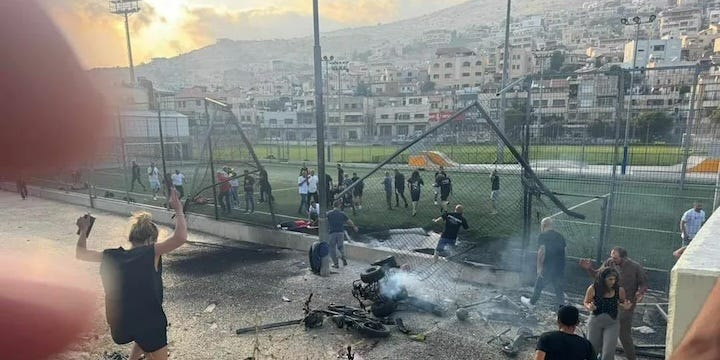

Option 2: An All-Out War
Should deterrence fail, whether by accident or by choice, a much more likely possibility after the July 28 attack and the Israeli response, a war would likely focus Hezbollah’s rocket, missile, and drone capabilities, and trying to push the group’s fighters farther from the border, most likely to the other side of the Litani River. In other words, actually enforcing UNSCR 1701 (we all need to remember there is a 10,000 strong UN force already in Lebanon tasked with enforcing 1701, and failing miserably). However, even a decisive defeat of Hezbollah, might not lead to the group’s destruction, given its deep roots in Lebanon and then strong support from Iran.
As I have just written, Israel possesses considerable capacity for war with Hezbollah, though the Shiite group would be a formidable foe. However, the IDF outnumbers Hezbollah in troops, tanks, artillery, and other forms of military power. Israel’s equipment is also far more sophisticated, and its forces are better trained. Since its poor performance in the 2006 war, Israel has constantly prepared for war with Hezbollah, in contrast to its lack of preparation for the invasion of Gaza. Israel has prepared a target set it can draw on at any time for strikes against Hezbollah assets.
Some Israeli leaders, such as Benny Gantz, a former member of Prime Minister Netanyahu’s war cabinet, remarked in February 2024, that Israel could strike the Lebanese military as part of a broader war. “It is important that we be clear—the one responsible for the fire from Lebanon is not only Hezbollah or the terrorist elements that carry it out, but also the government of Lebanon and the Lebanese state that allows the shooting from its territory,” Gantz said. He also added: “There is no target or military infrastructure in Lebanon that is not in our sights.”
An Israeli attack would probably involve massive airstrikes seeking to target Hezbollah leaders, disrupt command and control systems, (including conducting cyberattacks), and hit Hezbollah’s rocket and missile launcher sites. Although Israel would target Hezbollah leadership and military sites in Beirut and in the Beqaa Valley, it would likely focus most of its effort on Hezbollah’s presence near the border. Using lessons learned in Gaza, Israel would likely also attempt to destroy Hezbollah’s tunnel network. Finding and targeting Hezbollah tunnels has been an Israeli military and intelligence priority for years, though Hezbollah showed in 2006 that it could successfully use deception to build an extensive network.
After the sustained air campaign, Israel would most likely invade Lebanon with two or three divisions (it used four in Gaza, where the dense urban terrain required extensive manpower), seeking to uncover and destroy hidden tunnels and force Hezbollah fighters to the other side of the Litani River. Although southern Lebanon is not densely populated like Gaza, some of the fighting would involve urban warfare. If Israel were to successfully remove Hezbollah forces, it would then carefully monitor the area and conduct extensive strikes if necessary to prevent any return. Israel might push for a more robust UNIFIL force to monitor the area or seek to create a buffer zone, working with Lebanese proxies, as it did before 2000, though both of these approaches have proved insufficient in the past.
Hezbollah would respond in several ways. Hezbollah forces would conduct guerrilla attacks, likely using an extensive tunnel network and well-prepared defensive positions near the Israeli border, taking advantage of the rough terrain there. Hezbollah would also attempt cross-border attacks as well as perhaps sea-born raids by Radwan units. In addition, Hezbollah would use its massive rocket and missile arsenal to attack Israel, potentially overwhelming Israel’s defensive systems and striking at targets throughout the entire country. Hezbollah might also return to their roots, and conduct terrorist attacks against Israeli targets around the world, working closely with Iran to do so. Hezbollah would also use its influence over the Lebanese government to ensure that any ceasefire was on its own terms. There is also the possibility that an all-out war against Hezbollah, especially one that appears as if it would be a victory for Israel, would draw Iran into the conflict. I will examine that possibility a little later.
However, even in the absence of a conflict with Iran, an Israel-Hezbollah war would be far more intense than the 34-day war in 2006, in which all of Lebanon and Northern Israel was under threat, a result of Hezbollah’s then relatively short-range rocket capacity. Eighteen years later, a war between Israel and Hezbollah would once again see Israeli missiles and rockets shake Beirut and Hezbollah’s stronghold of southern Lebanon, with Israel being clear it does not distinguish between the state of Lebanon and Hezbollah, the latter of which was part of the country’s government for years. However, for the first time, Hezbollah missiles and rockets will threaten not just the north of Israel but the entire country.
Option 3: Limited War
Another approach is to continue the current level of conflict, in which there is not all-out war, but dozens of Hezbollah fighters are killed every month, as well as a small number of Israelis. Civilians would die on both sides, but if current patterns continue, far more Lebanese would be killed than Israelis. Limited war would involve regular Israeli airstrikes on Hezbollah forces near the border and on the occasional Hezbollah commander, while Hezbollah would fire anti-tank missiles at military and civilian infrastructure across the border, launch rocket and mortar attacks on Israeli positions, and allow other Palestinian groups based in Lebanon (most prominently the Abdullah Azzam Brigades and Fatah al-Islam), to attempt the occasional cross-border attack.


Limited war would serve several purposes for both Israel and Hezbollah. For Israel, such strikes keep Hezbollah off balance, forcing its commanders to hide or risk being killed and putting its weapons caches at risk. In addition, the strikes show the Israeli people that the government is actively trying to defend them and make it hard for Hezbollah to amass forces that might conduct a surprise attack across the border. For Hezbollah, limited war allows it to show solidarity with Hamas and affirm Iran’s “resistance” agenda. Although Hezbollah has lost over 100 fighters since October 7, this level of casualties is manageable for a large organization with many skilled personnel. For both Hezbollah and Israel, limits to the conflict help avoid the costs of an all-out war.
At the same time, limited war poses problems for both sides, in addition to the ongoing casualties. The biggest problem is the impact on civilians along the border. The conflict worsens Lebanon’s always-simmering instability and mounting economic problems, and Hezbollah risks taking the blame. Around 75,000 Lebanese have fled southern Lebanon, with no immediate prospect of return and Israel faces a similar problem with its 80,000 displaced citizens, who are unlikely to return to their homes en masse as long as limited war continues. Finally, it is hard to imagine that a limited war between Israel and Hezbollah would actually remain limited for long.
Option 4: Coercive Diplomacy
Another approach is to use coercive diplomacy to compel Hezbollah to abide by UNSCR 1701. While Israel is putting military pressure on Hezbollah through a mix of strikes on their forces and leaders, the United States should be adding to the pressure in the diplomatic arena, whether or not they are is another story. However, Israel can't be sure how much The renewed threat of an all-out war gives this pressure additional strength. Hezbollah, however, does not want to be seen as surrendering to Israeli pressure, particularly at a time when Israeli attacks on Palestinians are dominating the headlines.
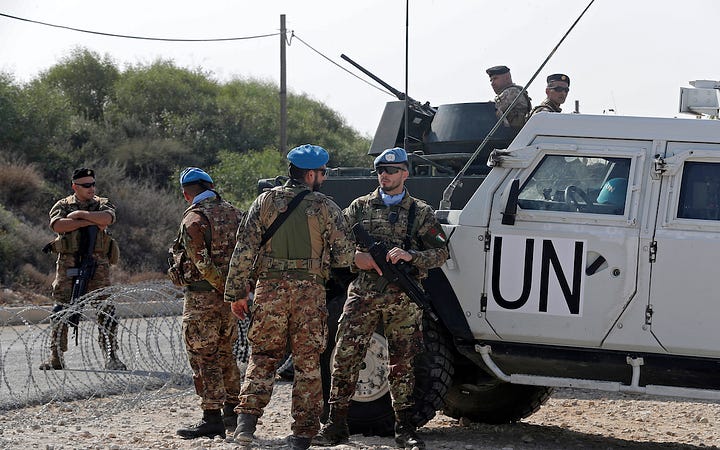
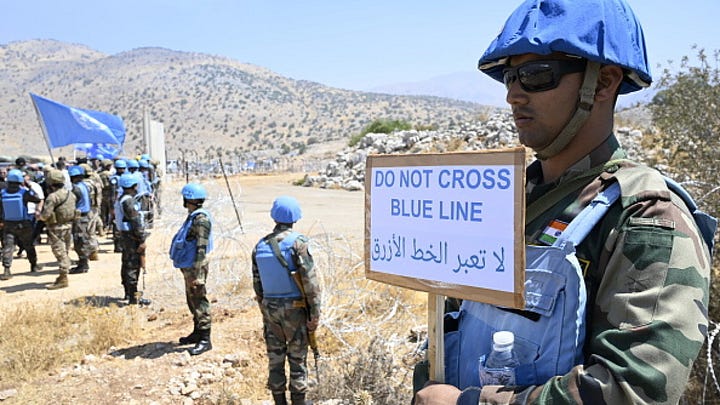
In addition to ending Hezbollah attacks on Israel, the goal for Israel would be for Hezbollah to move its armed forces back to the Litani River, as promised under UNSCR 1701. It is possible that Israel would also accept a less comprehensive withdrawal that moves Hezbollah farther back from the Israel-Lebanon border but not all the way to the Litani River. UNIFIL might need to be bolstered substantially and be far more aggressive in its use of force in response to any incursion, both of which would be difficult to accomplish.
Israel, too, would be asked to make concessions and changes in response to UNSCR 1701 and to appease Hezbollah. Israel regularly violates Lebanese airspace, which Israel does to strike and monitor Hezbollah positions. Hezbollah would also likely seek an Israeli evacuation of Shebaa Farms and the village of Ghajar, perhaps placing them under UNIFIL so that the group could claim a political victory even as it made concessions.
Iran and risks for a regional war
To understand its recent behavior, one must understand how Iran may be changing its strategy. Iran’s most cherished goal is to chase the United States from the Middle East and then dominate the region. In the long run, eliminating Israel means removing a rival power as well as America’s closest ally which makes it a win-win for Iran.
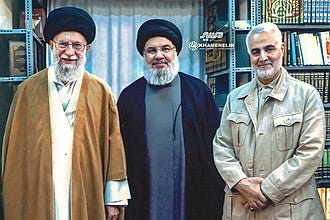
Ayatollah Ali Khamenei, Iran’s supreme leader, has repeatedly predicted that Israel, founded in 1948, would not reach its 80th anniversary. Nonetheless, until the night of April 13, when it launched over 300 drones and missiles against Israel, Iran avoided direct confrontations with the Jewish state.
Instead, in a policy reminiscent of that maintained by Egypt’s president, Gamal Abdel Nasser in the 1950s and 1960s, Iran’s goal has been to gradually weaken Israel through endless wars of attrition. Iran believes forcing Israel to keep its reserve force permanently mobilized would undermine the economy and sap morale. To avoid direct retaliation, it arms irregular forces, such as Yemen’s Houthi rebels, Hamas and most importantly Hezbollah to strike Israel in Iran’s name.
Iran views Hezbollah as their first line of defense, and a war that seriously degrades Hezbollah would be a major blow for their plans in the region. They rely on the group, founded with Iranian support in 1982, as a bulwark against Israel and as a buttress to its broader interests in the region. Since Hezbollah is the most valuable of Iran’s assets, the regime in Tehran is reluctant to have it damaged and degraded, as it would inevitably be in a direct confrontation with the IDF. Even if it were to fight the IDF to a standstill, as it did in 2006, Hezbollah would suffer massive losses and with the Iranian economy shackled by economic sanctions, they would need years, if not decades to restore Hezbollah to peak fighting capacity.
Tehran also has other reasons to keep Hezbollah in fighting trim: It needs Nasrallah to protect other Iranian constituencies and interests. In addition to allowing Tehran to maintain a constant level of menace against Israel, Nasrallah’s forces serve two other, no less important purposes: They maintain the ascendancy of the Shiite faction over Lebanon’s two other principal sects, the Sunnis and Maronite Christians. (Founded on a strict Shiite worldview, the Islamic Republic takes very seriously its self-appointed role as protector of the sect.). As well as their role in propping up the Syrian regime of Bashar al-Assad, the most vulnerable of Tehran’s marionettes in the Middle East.
Iran can’t afford to have Hezbollah stand down from either task. Assad may have survived a long and bloody civil war, with the help of Iran, Hezbollah and Russia, but he has been left with the responsibility of repairing a devastated country while ruling over a resentful populace. Spasms of anti-regime protests, the most recent in June 2024, are a reminder of his precarious position. Lebanon, for its part, is perennially on the precipice of economic and political implosion, with the risk of a revival of three-way sectarian violence going hand in hand with that implosion. Were Hezbollah to commence full-scale hostilities with Israel, the economic shock would almost certainly push Lebanon over the edge. Nasrallah would then be required to defend Hezbollah’s interests. He would also have to divert some of his resources, men and materiel from Syria, enabling the anti-Assad opposition to regroup. With Russia embroiled in the war in Ukraine, Iran would be left carrying much of the burden, a position unfamiliar to the theocrats in Tehran, who prefer to have others doing the heavy lifting.
The calculus in Tehran appears to have changed recently. As the Biden administration follows the Obama era policy or appeasement of Iran and looks for ways to extricate itself from the Middle East and focus on the Pacific, the likelihood of a US strike against Iran’s nuclear program has, until there is a change in administration in Washington, been placed on the back burner.
Iran, meanwhile is sufficiently emboldened by events to have recently accelerated its processing of highly enriched uranium. Meanwhile, Hezbollah leader Hassan Nasrallah not only threatened to attack shipping in the Mediterranean and even strike Cyprus, should they continue to cooperate with Israel, (Cyprus is an EU member where the United Kingdom maintains two military bases). He also announced that his elite Redwan fighters are ready to invade and capture Israel’s Galilee region, and that Hezbollah could soon start firing missiles at Haifa, the country’s third-largest urban area. It is home to one-tenth of the country’s population, and the largest concentration of heavy industry in Israel, as well as the site of Israel’s main port and naval base.
I believe that an attack on Haifa would prompt an immediate invasion of Lebanon and a full-scale war. As I said earlier, an war against Hezbollah would put Iran in a difficult position. It is unclear if Iran would be willing to sacrifice a asset it has invested so mich time and money in, especially one that is the key piece in their international plans, be destroyed by the Little Satan (Israel).
How would a war between Iran and Israel look?
Because of the importance of Hezbollah to Iran, if Israel invades and is beating the terror group handily, Iran might decide that they have no other course of action than to attack Israel. However, in that eventuality Israel would have military superiority, both offensively and defensively and Iran would face major challenges in any direct confrontation with Israel. First, while Iran has a larger army (700,000 to 526,000), more armored forces (2,763 to 1190), more artillery (6,800 to 530) and more SAMs (410 to 70), Israel’s equipment is newer, more advanced, and they have many more personnel with combat experience. The Iranians are still using the F-4 Phantom, which saw service in the Vietnam War and the T-72 Soviet-era tank which has not been in service in Russia since 1992. Secondly, the distance Iran would have to travel to invade Israel is prohibitive. It is over 600 miles from the westernmost point in Iran to the easternmost point in Israel and they would have to go through Iraq, Syria and Jordan. While Iraq and Syria would not object to Iranian troops and tanks rolling through their countries, Jordan certainly would and the Israeli Air Force (IAF) would be bombing them the entire way. I believe that this challenges make a ground attack by Iran very unlikely.
However, the threat posed by Iran’s arsenal of drones and missiles should not be dismissed. Under decades of sanctions, Iran has invested heavily in developing domestic weapons programs, resulting in cheap and effective drones as well as advanced ballistic missiles. Iran’s missiles pose a serious threat to Israel and Tehran’s combat and suicide drones, can wreak havoc on a civilian population if launched in large numbers.
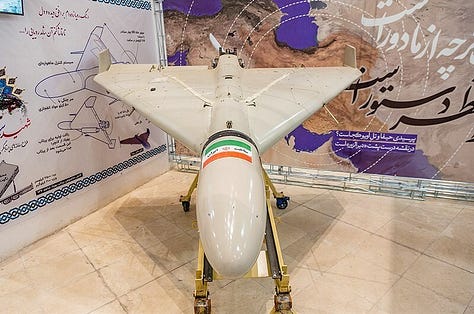
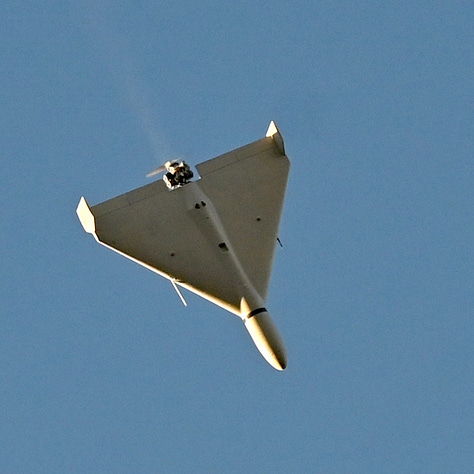
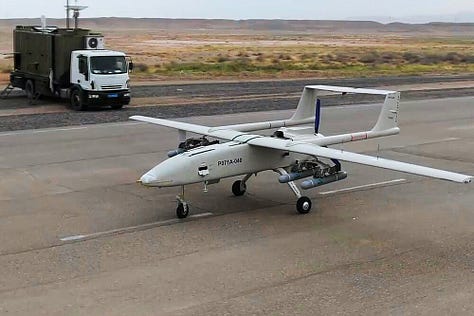
Since 2022, Iran has provided more than 1,000 Shahed-136, Shahed-131 and Mohajer-6 UAVs, to support Russia’s invasion of Ukraine. According to the Defense Intelligence Agency (DIA), In May, 2024, Iran began assisting Russia in establishing a Shahed-136 production facility in Russia. So, it is safe to assume that Iran has hundreds if not thousands of one-way drones in its inventory to attack Israel. Israel would counter any airborne threat with its the long-range Arrow missile interceptors, medium-to-long range David’s Sling and short range Iron Dome and Iron Beam (anti-missile system that uses a laser to destroy missiles and rockets) air defence systems as well as a system called Drone Guard.
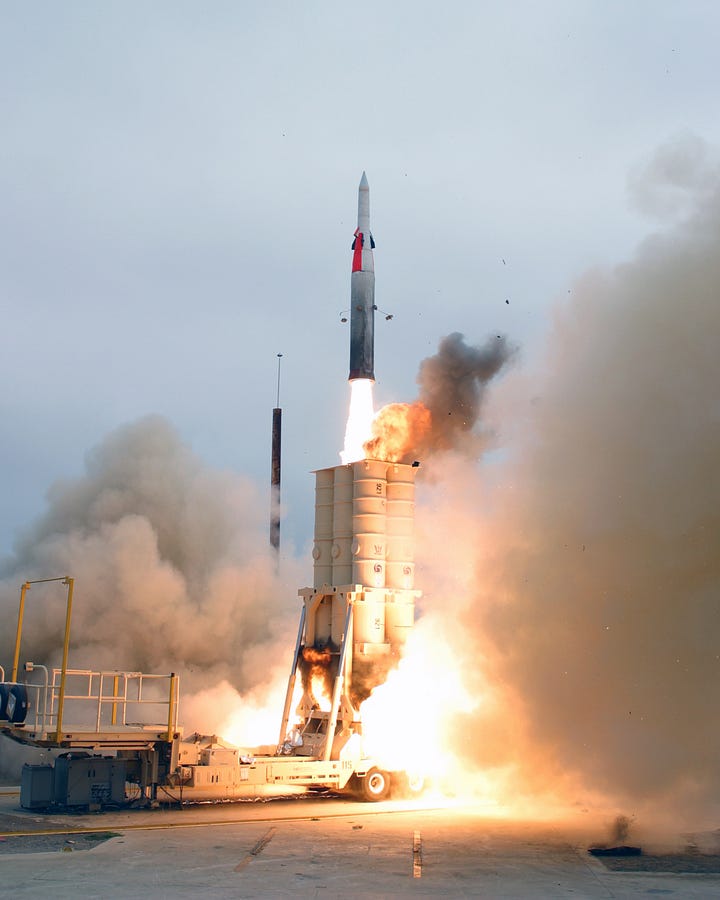
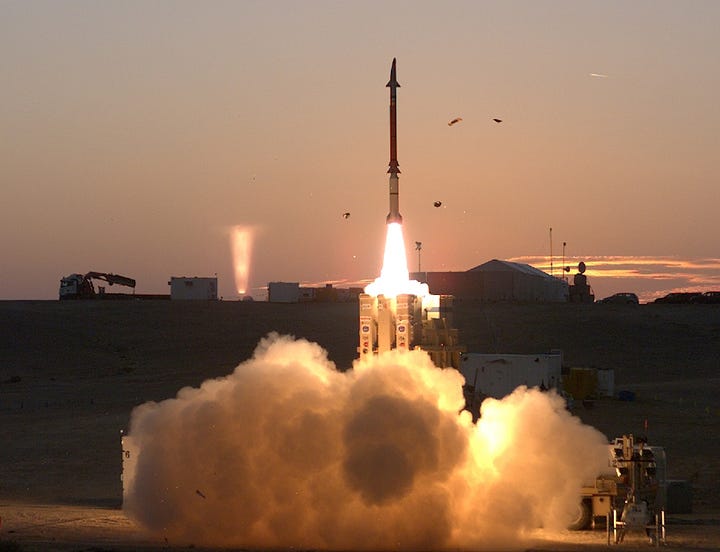
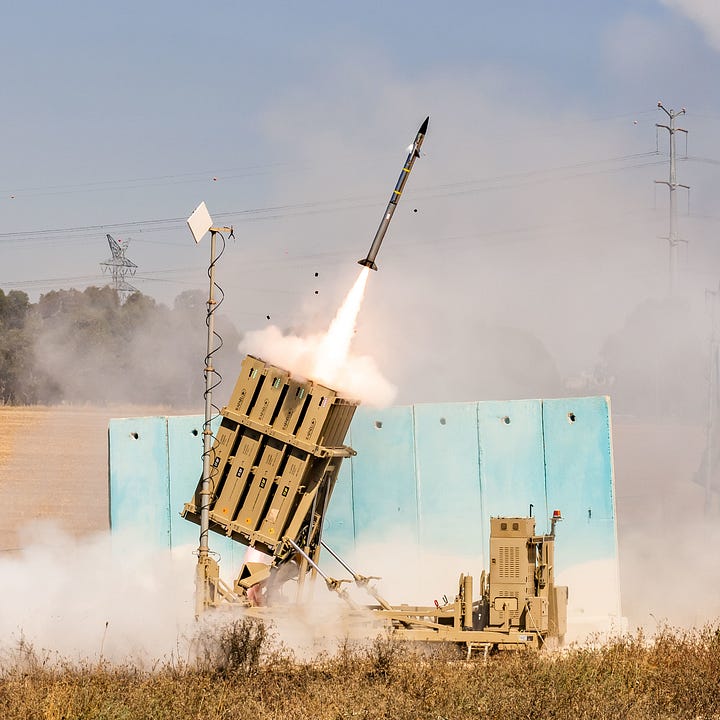
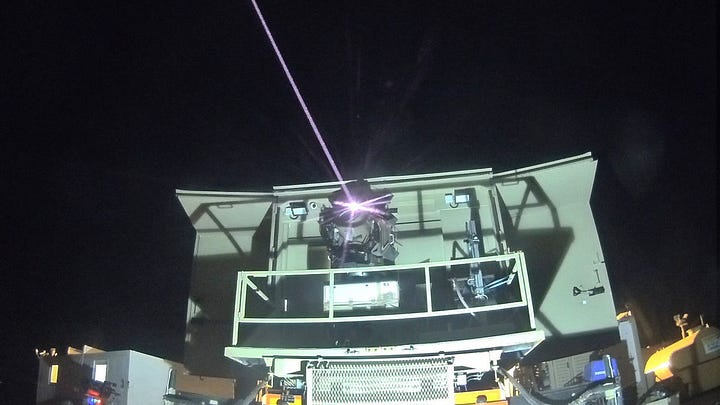
They would also launch large airstrikes with their fleet of stealth F-35 Lightning II fighters followed by their F-15 and F-16 ground attack aircraft. Israel’s attack on Iran on April 19, appeared to expose the vulnerability of Iran’s defenses. Israel’s advanced fighter jets give the country the superiority in the air, but Israel faces several obstacles, including a lack of aerial refueling tankers and the need to get permission to cross the air space of the same countries Iran would to launch their ground attack. While Iran would get permission from Iraq and Syria, it is possible that Israel would not get permission from Jordan to fly through their airspace to attack Iran.
A missile war and the subsequent massive use of Israeli air power would reveal both countries’ vulnerabilities. Iran is vulnerable despite its massive population size compared to that of Israel (80 million for Iran as opposed to 8.5 million for Israel) and the even more substantial difference in territorial size (1.65 million sq. km for Iran compared to only 21,000 for Israel). Why is Iran as vulnerable as Israel despite these differences? Because it has existential liabilities. One is that Iran exports 90% of its oil and gas from a single port (essentially an island), Kharg, one hundred miles southeast of the tip of the Iraqi-Iranian border on the Persian Gulf. The revenues Iran derives from that oil and gas amount to at least 40% of government expenditures and around half its foreign reserves. Also, the port of Bandar Abbas on Iran’s southern tip is responsible for 90% of its container trade. The goods brought in by container represent only 15-20% of total trade, but they are the goods that keep the Iranian quality of life in the 21st century and keeps a large portion of the populace from open revolt. One can safely assume that the Israeli Air Force has given much thought to “addressing” these two points of Iranian vulnerability.
Israel, for it's part, and in the wake of the October 7, attacks, appears weaker, its government deeply unpopular and divided in a way that makes strategic planning nearly impossible. The Netanyahu government needs some high-profile victories to reassure the public, that while their domestic policies might be unpopular, his is the administration that can properly conduct Israel through this time of international strife. They can not maintain a total war footing forever either, the cost to the economy would be catastrophic. So any war planning against Hezbollah and/or Iran would need to take this into account. If pushed to the brink either by the constant war or any surprise by Iran, I think they have one other card in their hand, however, it is a card, not lightly played.
Although it has never been confirmed or denied by Israel, there are many intelligence analysts that believe Israel possess at least 90 nuclear weapons and the ability to deliver them at intercontinental ranges. If the Mossad (Israeli intelligence) suspects that Iran has already completed a nuclear weapon or is very close to finishing one, and is planning to use it against Israel, there could be some in the government that would call for a preemptive strike on the nuclear facility to completely destroy it. This would come with total worldwide condemnation, but it could appear to many inside Jerusalem that they are being backed into a corner.
The potential for miscalculation
Even if each side wants only the current level of violence and not a full-fledged conflict, miscalculations happen, and best-laid plans can often go awry.
It may be a cliche to point to World War I, but the way the assassination of Archduke Franz Ferdinand in Sarajevo sparked a chain of events that dragged countries into war, sometimes against their better judgements, and killed millions of people is a lesson from history that should not be forgotten. But war is not inevitable, and countries can come back from the brink. A previous cold war event that threatened to turn hot is a useful example. The Cuban Missile Crisis of 1962 saw the US and the former Soviet Union get dangerously close to what would have been a disastrous nuclear war. A resolution was eventually reached, averting the danger, even as the two countries remained foes for decades afterwards.
As the potential for war looms, the only certainty is that while Israel and Hezbollah may be the primary actors in a coming conflict, it won’t be contained to them alone and its consequences would be felt across the region and around the world.
Managing the Crisis
With the high risk of conflict, between Israel and Iran, Washington needs to step up efforts to prevent an all-out war which would have significant and negative implications for the United States at home, in the Middle East, and around the globe. Restoring deterrence and limited war while better from a US perspective, both have their limits. Deterrence appears, at best, a temporary solution that could easily fall apart, while a limited war could spiral into an all-out war and, even in limited form, could be disastrous for both Lebanon and Israel.
A war could dramatically raise tensions with populations across the Middle East and beyond, including in the United States and Europe, and lead to increased attacks by Iranian-backed groups against Israel, the United States, and commercial targets in the region and coastal areas. US forces in the region, already facing limited attacks from the Iranian-backed Houthis, in Yemen, would likely face more frequent and larger strikes. Although the economic implications of the Gaza war have been limited, an all-out war against Hezbollah would likely have significant implications on trade, supply chains, energy prices (including oil and gas), investment, and tourism.
A major war would also have significant humanitarian costs. As I said in Part II, Hezbollah’s rocket and missile systems put all of Israel under threat, and its ground forces are far more formidable than those of Hamas. Israel’s promise to devastate Hezbollah strongholds in Lebanon, as it has in Gaza, is credible, and thousands could die in these attacks. Lebanon’s economy, already under severe strain, could collapse completely as hundreds of thousands of people are displaced and the country’s infrastructure is destroyed. This would likely send the country into another civil war with a number of groups vying for control over the country.
Consequently, the United States should either seriously focus its efforts coercive diplomacy or get out of the way and let Israel do what needs to be done. There has been some movement on this front. For example, US negotiator Amos Hochstein has made efforts to restore stability and discussed a proposal that calls for the withdrawal of non-state armed actors from southern Lebanon, a deployment of Lebanese armed forces, and a development plan for southern Lebanon. In addition, France presented a three-step proposal to Israel, Lebanon’s government, and Hezbollah (and briefed the United States) that outlines a 10-day process of de-escalation and calls for Hezbollah to withdraw its fighters to a distance of about six miles from the border. Negotiations are critical, but they will not be easy. Hezbollah has formally rejected negotiating a de-escalation proposal until the war in Gaza ends.
US leadership will be important in any negotiations but once again, the hot and cold signals being sent by the Biden administration are not helping Israel, and are actually bolstering the terror groups. On one hand, administration says they accept Israel's right to defend itself, but on the other hand, and sometimes on the same day, Biden and his cronies, including Democrat nominee Kamala Harris, are saying that Israel must show restraint and accept that Hamas and Hezbollah will need to survive for regional stability. These mixed signals, and the distrust they engender in Jerusalem, can only result in a lopsided deal that Israel will reject and tt the same time they are encouraging Hamas and Hezbollah and actually prolonging the war in Gaza as well as making a war against Hezbollah, and even Iran, more likely.
I'm going to speak like a Marine now, and say that I think Israel should either tell Blinken, Biden and Harris to fuck off and get out of the way, or just hold on until November and hope for a Trump victory. If Trump becomes President, he would support Israel in whatever direction they wanted to go and he would tell Iran in no uncertain terms that any major attack against Israel would be meet by a swift and overwhelming response by the United States. I believe that he should make every effort to support the Iranian opposition and there is a chance that the opposition could use the opportunity of a massive Israeli and US strike against Tehran to topple that evil regime once and for all.
I have now written 4,800 words and it seems like I haven't said anything, or at least come up with any solutions. A writer with less confidence or maybe one that doesn't have such strong opinions, might just says that he's just reporting the facts and letting the reader make their own judgements but that’s not what you are here for. You read my posts to hear what this one Midwestern guy has to say. So next time I'll give my very controversial opinions on a solution to the Arab-Israeli problem. Make sure to tune in, it will be one to remember.
I hope these posts are informative and that you might even enjoy them. Please feel free to share them with anyone who might be interested.
Chris

